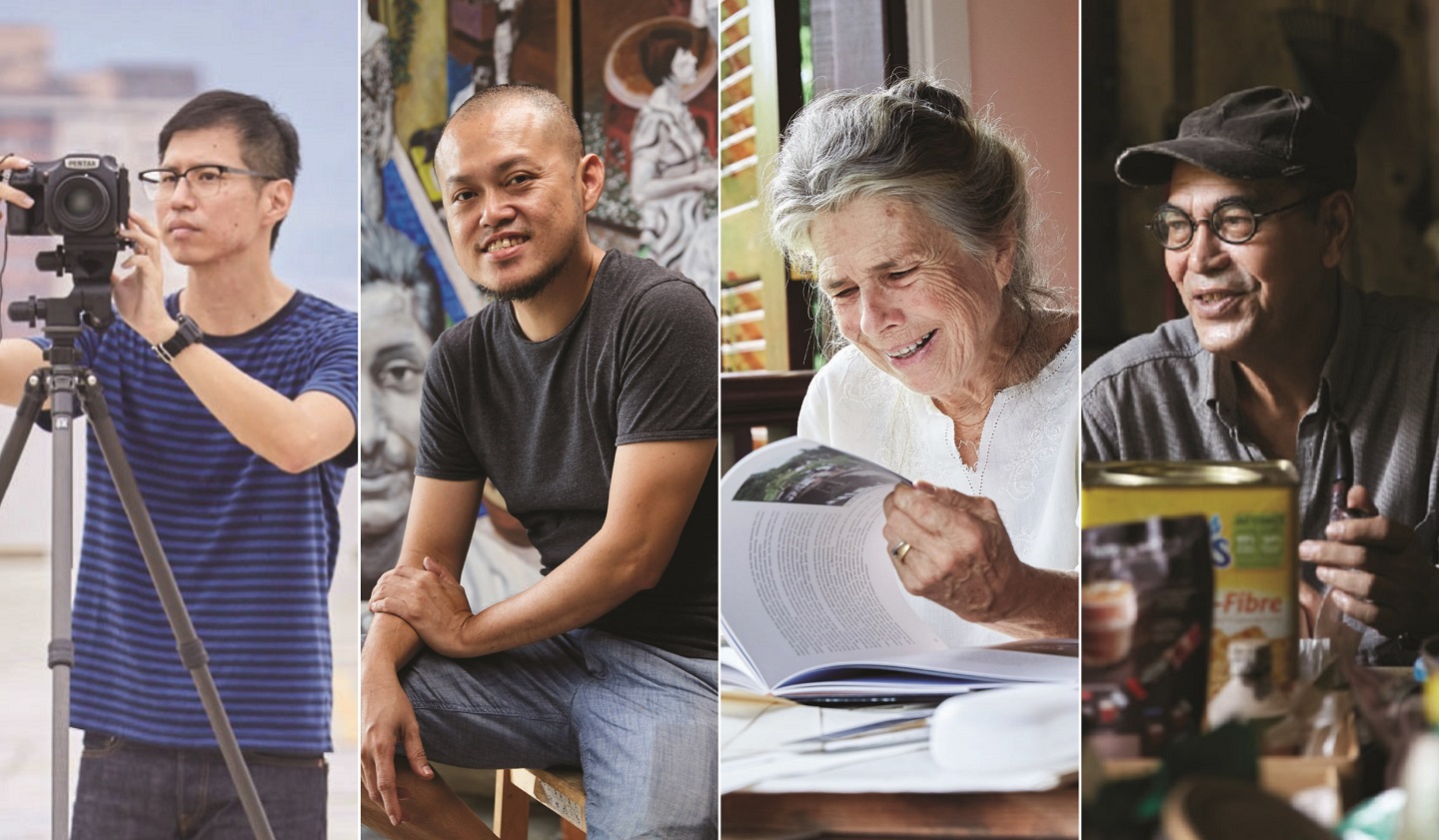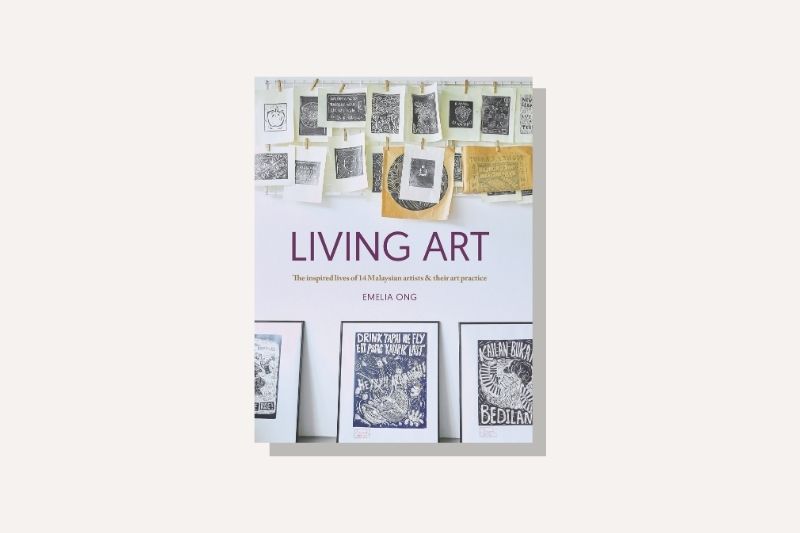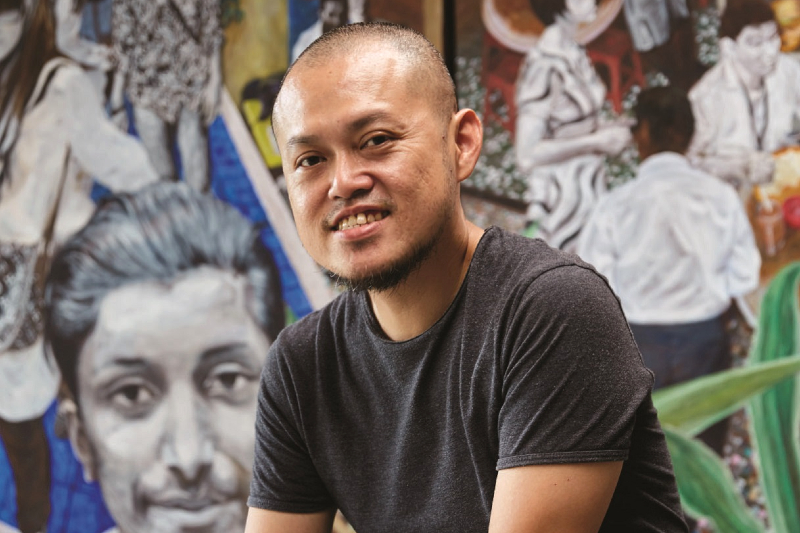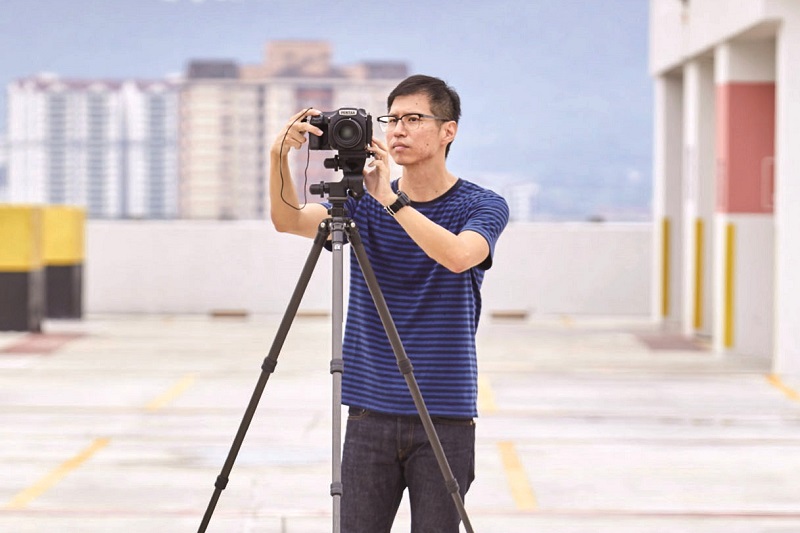
Eiffel Chong, Gan Chin Lee, Ilse Noor and Mad Anuar Ismail are featured in 'Living Art' (All photos: DL Studios)
Numerous romanticised notions surround the field of creativity, including divine talent and magical product delivery. What Living Art adeptly reflects, through the careful and very readable case studies of 14 established local artists, is that sustainable and successful creative careers also require clear method, diligence, reflection and challenge. It is a survey of living art practices.
Thus, the import of the publication goes beyond applauding the strong practices of the artists — Mad Anuar Ismail, Noor Mahnun Mohamed, Sharon Chin, Abdul Mansoor Ibrahim, Hasnul J Saidon, Gan Chin Lee, Jennifer Liu Hsin Ying, Roslisham Ismail, Elias Yamani, Eiffel Chong, Azzaha Ibrahim, Shia Yih Yiing, Ilse Noor and art collective Pangrok Sulap.
books_800px_1.jpg

This book by Emelia Ong shares how they think and work and where they do so, in their own voices. The practices and career developments of each creator are discussed in wonderfully accessible language, interspersed with crisp visuals by David Lok (Studio DL) of their work spaces and demeanours.
Ong, who teaches Malaysian art history at the Cultural Centre in the University of Malaya, asked questions of each artist concerning six areas — growing up, their learning process, space and place, current practice, working process, and materials and tools. The layout of this book is neat and the language simple, and the stories of how the 14 came to be involved in art are refreshing and revealing.
Their comments not only open windows to insights but also indicate the kind of questions that are useful to ask to guide the development of projects, leading to exhibitions, collecting art and its appreciation.
gan_chin_lee_1.jpg

Chin shares that drawing is personal and compares it to the way we write or speak. Veteran sculptor Mad Anuar reminisces about becoming closer to the wood that inspires his carvings through long stays in the forest, communing with nature and trees. “There are vibrations, you see? If you sit still and stay with the trees, you will feel it after a long while. There are no words to describe this. Some say it’s intuition,” he says.
Gan discusses his painting project on new villages and the extensive research he undertook to better understand the lives of those he paints. “Their ideologies are so different. It’s important that we learn to understand each other and be able to communicate. How do we gain acceptance and tolerance for each other?”
Chong, a photographer, muses, “The darkroom is a good analogy for our lives — in life, in order to get a good outcome, you need preparation and patience, and there is a lot of waiting involved.”
effiel_chong.jpg

Ilse reveals that as a child, she initially wanted to study archaeology, not art, for its promise of adventure, but was then inspired by drawing through art classes. She has continued since, with the adventurous spirit that brought her to Malaysia from Germany to become a master printmaker.
The struggles and experiences of the artists featured in this book will benefit the general reader as well as art students, artists, curators, gallery owners, collectors and academics. There is information that will enrich individuals and the community as they engage with those who create art.
Read about the passion, dedication and perseverance of these 14 notable talents and you will appreciate the varied creative processes behind their works and what inspires them.
As Ong says, “Besides learning a lot about the detailed processes, I also loved listening to the artists’ various approaches and the motivation behind their artistic decisions. These conversations cemented my own beliefs that art practice is ultimately not about mastering technique, expression or craftsmanship (even though those are valuable outcomes), but about finding meaning and purpose in life.”
'Living Art' is available through online order at arecabooks.com or at Kinokuniya and MPH bookstores.
This article first appeared on Aug 17, 2020 in The Edge Malaysia.


